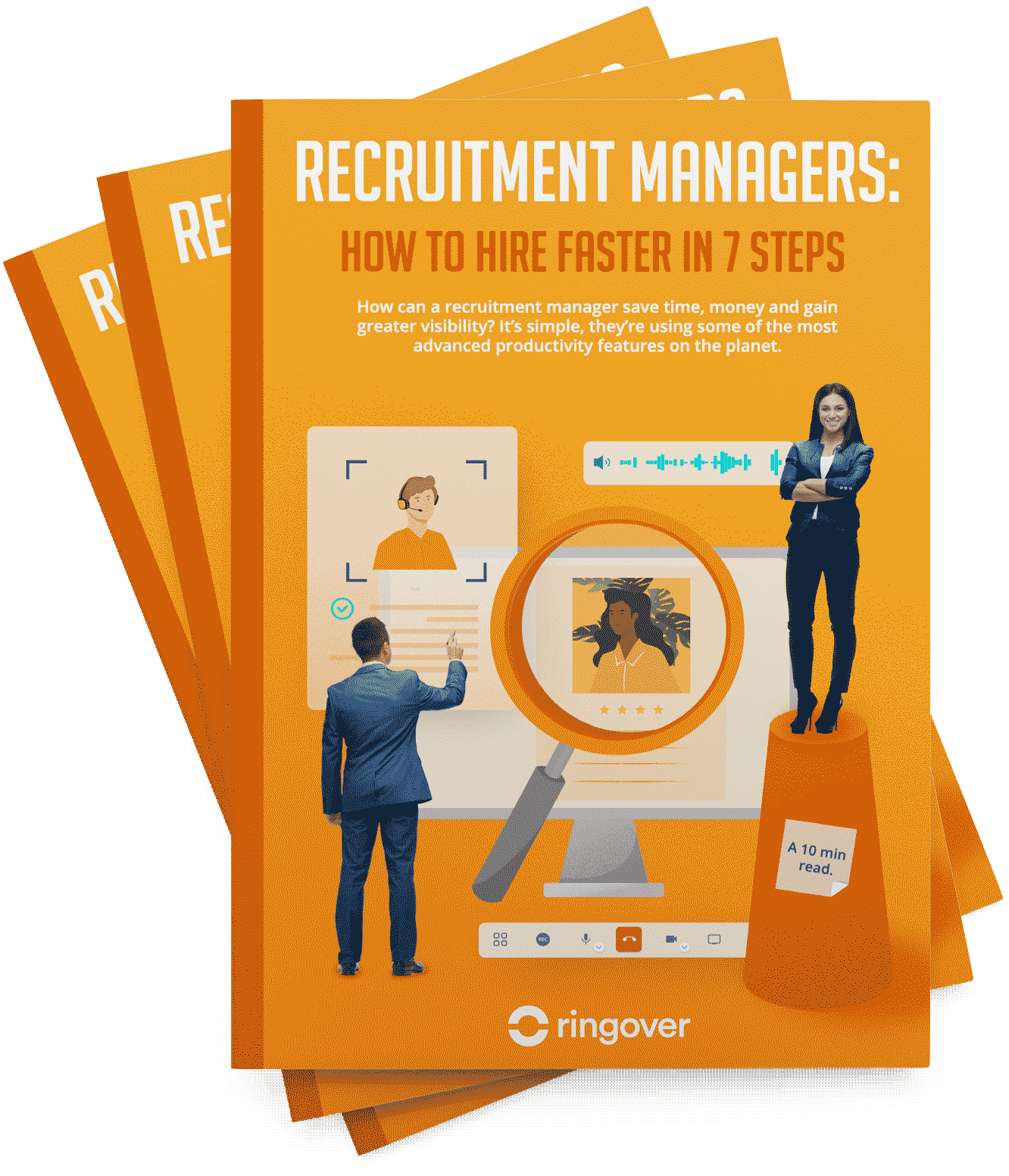Summary
Professional promotion, a matter of importance for many employees wishing to advance in their careers and improve their working conditions, deserves special attention. Are you wondering about its exact nature, its benefits, its drawbacks, how to implement it within your company, or how to manage it effectively?
Discover Ringover for Recruitment
In this article, we will detail what career advancement concretely means, its importance for both employees and employers, the steps for its implementation and effective communication, accompanied by practical advice for optimal success. Keep reading and discover everything there is to know about career advancement and what it entails for career development.
Professional Promotion: What Is It?
Professional promotion represents a crucial mechanism in personnel selection, aiming to fill a vacant position or generate new professional opportunities within a company. This process leads to the hierarchical ascension of an employee, marking a change in position, responsibilities, and often, a salary increase. This progression can be triggered by several factors recognized by the employer, such as seniority, performance, qualification through training, or specific potential. Moreover, an employee can initiate a promotion request themselves if they desire to advance in their career and enhance their skills.
In concrete terms, professional promotion is generally materialized by signing a new employment contract or adding an amendment to the existing contract, detailing the new terms of employment. It may also require the employee to undergo additional training or go through an adaptation period. In some cases, the framework of professional promotion is structured by legislation and collective agreements, which may impose specific criteria depending on the sector of activity or the size of the company.
Why is professional promotion important?
Professional promotion is crucial for the success of a company and the well-being of its employees, offering significant benefits for both parties:
- Retaining top talent: By offering career opportunities to employees, the company strengthens their loyalty and encourages them to excel.
- Cost reduction: Internal recruitment allows the company to save on the costs of searching, selecting, and training new employees.
- Rewarding excellence: By recognizing employees' performance, merits, and potential, the company encourages them to continue excelling.
- Promoting well-being at work: Offering better working conditions improves employee satisfaction and engagement, thereby reducing stress and turnover rates.
- Optimizing skills management: Effective talent management enhances human resources and the competitiveness of the company.
- Enhancing employer branding: An active policy of internal promotion projects a positive image, attracting and retaining talent.
How to identify the right employee to promote?
Selecting the ideal candidate for a promotion is not solely based on seniority or past performance. It is crucial to also assess other essential factors:
- Skills: Examining the skills required for the new position and those possessed by potential candidates is crucial. It is also important to evaluate their ability to acquire new skills and adapt to changing environments.
- Potential: Identifying employees with potential for professional development and the ability to take on higher responsibilities. Taking into account their career ambitions and motivation to progress is also fundamental.
- Personality: Evaluating candidates' personality and compatibility with the company's culture and team is paramount. Ensuring they possess key qualities for the position, such as leadership, communication, creativity, and problem-solving ability, is also essential.
- Recognition: It is important to value employees who have distinguished themselves through dedication, involvement, initiative, or innovation. It is also necessary to recognize those who have contributed to the company's success, customer satisfaction, or improvement of the work environment.
To choose the right employee for promotion, adopt a comprehensive and impartial approach that considers all aspects of the candidate's profile. Actively involving employees in the promotion process is also crucial, by keeping them informed of opportunities, listening to them, and supporting them.

Professional promotion: how to tell the employee?
Announcing the promotion of an employee is a key moment that requires attention and caution. It involves congratulating the promoted employee while providing reassurance and motivation to other team members.
Here are some tips for making this announcement go smoothly:
- Inform the employee first: Above all, it is crucial to inform the individual directly. Explain why they were selected, detailing the aspects of their promotion, their new responsibilities, and what the company expects from them. Also, ensure their agreement and commitment before making any public announcement.
- Officially confirm the promotion: Following the employee's acceptance, confirm the promotion in writing, via email or a letter stating the specifics of the position, salary, start date, etc. It is also necessary to formalize this promotion by signing a new contract or an amendment to the existing contract.
- Communicate to the team: After these formalities, announce the promotion to the rest of the team by highlighting the skills, qualities, and achievements of the promoted employee. It is important to explain the reasons for this promotion and its benefits for the company, while avoiding any comparisons that could lead to jealousy or frustration.
- Beware of ego management: Be attentive to the possible reactions of other employees, who may feel unfairly treated. It is important to reassure them about their role and value within the company, encourage them to share their personal development wishes, and offer them opportunities for training or career progression.
- External promotion dissemination: Finally, also communicate this promotion to your clients, partners, suppliers, and the media through appropriate channels (website, social media, press releases, etc.). Highlight the employee's profile, career path, and responsibilities while aligning with the company's strategy and vision.

Tips for a Successful Professional Promotion
Successfully promoting a colleague relies on a strategic combination of planning, communication, and continuous support.
First and foremost, it's crucial to clearly define the promotion criteria and communicate them transparently to the entire team so that each employee knows what is expected to progress.
Next, identifying promising colleagues through regular performance evaluations and constructive feedback helps to spot potential talent.
It's also important to support these colleagues by offering them training and development opportunities, whether through courses, workshops, or mentoring.
Once the time for promotion arrives, preparing the colleague for their new responsibilities with a well-structured transition plan, including a period of familiarization with their new tasks and expectations, is necessary.
Moreover, announcing the promotion must be handled tactfully to maintain the motivation and engagement of the entire team, by highlighting the achievements of the promoted individual while emphasizing the importance of each member in collective success.
Finally, post-promotion follow-up is indispensable to ensure that the colleague adapts well to their new role, offering continuous support and regularly evaluating their progress to ensure successful and sustainable integration.
Key Takeaways
Professional promotion represents a key opportunity for both employees and employers. It plays a crucial role in valuing individual skills, increasing motivation, retaining teams, and developing skills. However, it requires meticulous preparation, effective communication, and tailored support to avoid pitfalls and resolve potential conflicts.
If you are in a position to offer this opportunity to a member of your team, it is essential to familiarize yourself with the conditions, processes, and available opportunities and conscientiously prepare the colleague to adapt properly to their new role.



